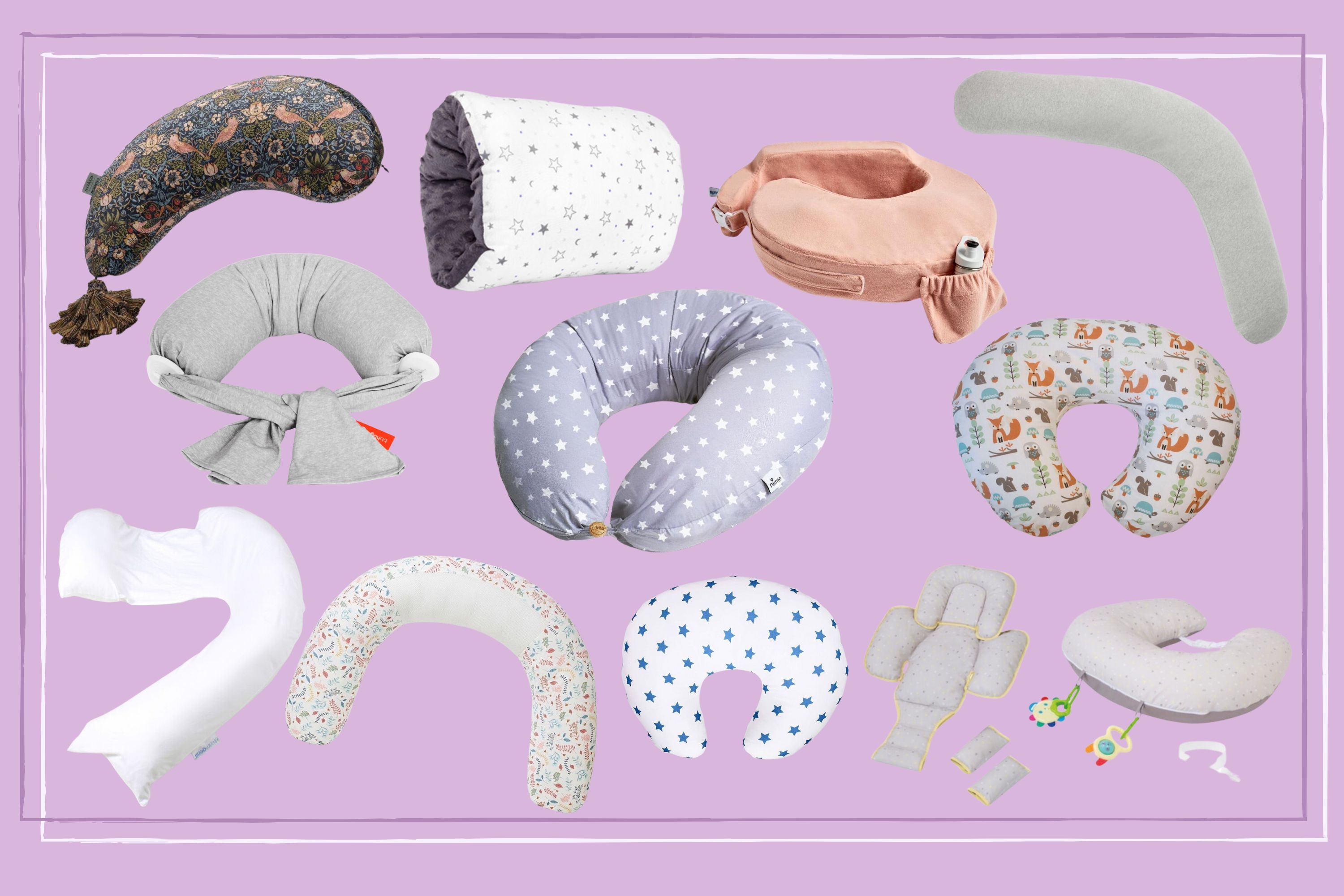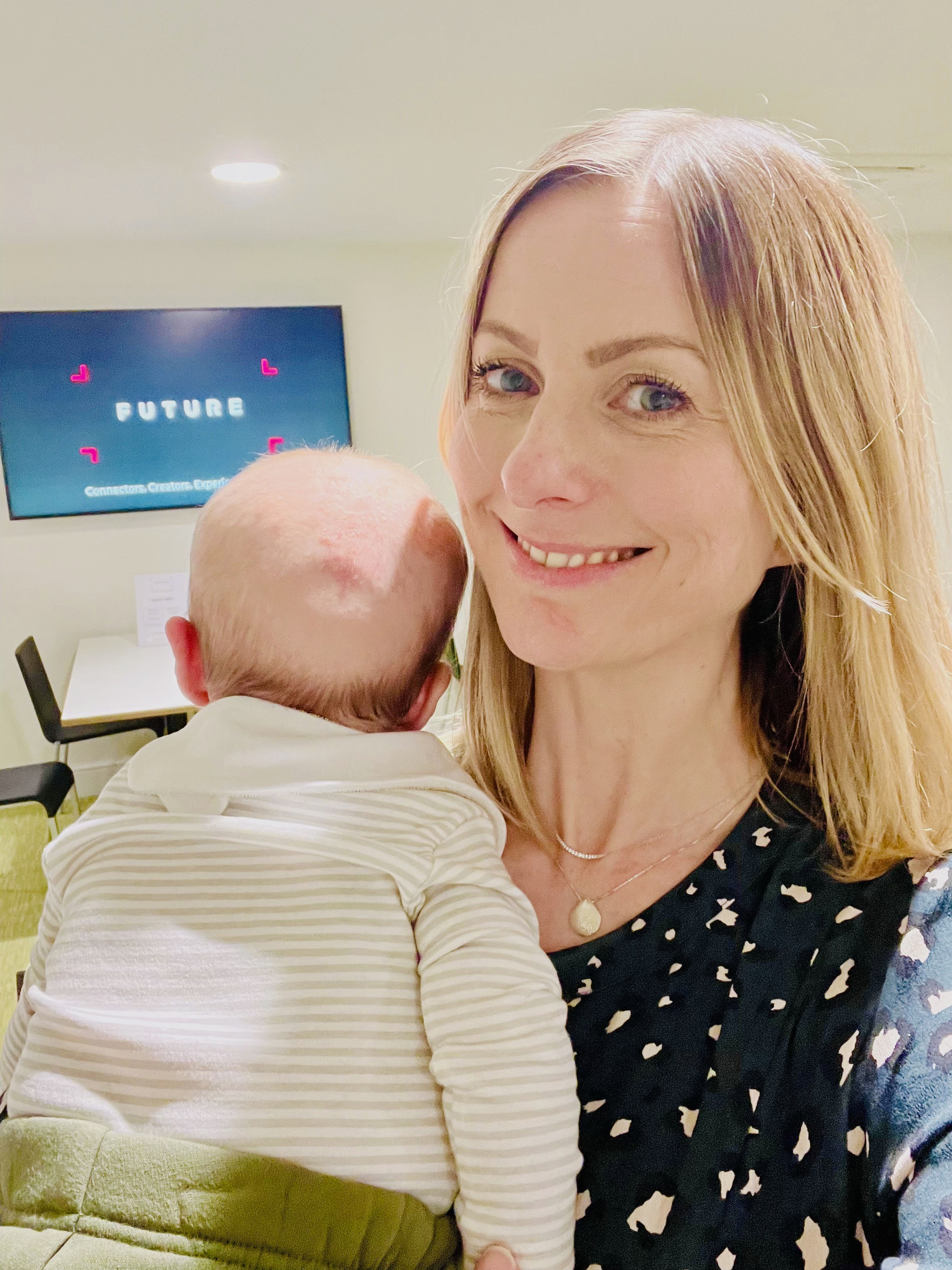Backache in pregnancy: causes and how to relieve it, according to women’s health experts
Expert advice on managing back pain in pregnancy from a GP, midwife and specialist physiotherapist – with insights from real-life mums, too


Growing a baby can be a wonderful experience – but it can also be a real pain, especially if you’re one of the many women who experience backache in pregnancy.
A common complaint is pain in the lower back (also known as the lumbar region), which research suggests affects around half to three-quarters of pregnant women. Pregnancy-related pelvic girdle pain (PGP) can be another source of backache during pregnancy, affecting around 45% of women.
“Backache is very common in pregnancy,” confirms Michelle Norton-Hughes, a physiotherapist specialising in women’s health and the founder of FlyMama. And whilst it can affect anyone, she says you’re more at risk if you have suffered with back pain previously and didn’t seek treatment or follow a rehabilitation programme. If you have had backache in the past and you haven't rehabbed properly, then you are more likely to get it again when you're pregnant, because pregnancy puts additional strains on the body, whether biomechanical or hormonal changes,” she shares.
But even women who have never had any issues with their back previously can suddenly find they experience backache in pregnancy, ranging from annoying niggles to debilitating pain.
5 causes of backache in pregnancy
There are various factors that can lead to backache in pregnancy, which a GP or specialist physiotherapist will be able to determine. Some common causes are outlined below.
- 1. Postural changes - Aches and pains in the lower back during pregnancy are typically down to the natural changes in posture that occur as your uterus grows in size.
“The lumbar lordosis – the curve in our spine in your lower back – can increase as the weight of your tummy increases,” explains Michelle. “This leads to a more anterior tilt of the pelvis, which means our lower back arches more and our tummy comes forward more.” This arching coupled with the growing weight of your bump puts increased strain on the lower back, which can result in aches and pains. - 2. Hormonal shifts - Changes in hormone levels during pregnancy contribute to various issues and symptoms. When it comes to back pain, increased levels of relaxin can play a part. “This hormone causes a laxity of the tendons, ligaments and muscles,” explains Dr Aarthi Sinha, a GP at Church Crescent Medical. This helps the body to accommodate your growing baby, and also facilitates the birth process. But a potential downside of this loosening is that the body becomes destabilised, which can often result in injury – particularly in the back.
- 3. Pelvic girdle pain (PGP) - Pelvic girdle pain is common in pregnancy, and is usually caused by the joints of the pelvis moving unevenly, leading to instability. It can cause pain in different parts of the pelvic region, including the back. “It can affect your sacroiliac joint, which is a bit lower than your lower back – imagine the dimples of your back,” says Michelle. It may be coupled with pubic symphysis pain, which is felt at the front of the body around the public hair region.
- 4. Muscle separation - During pregnancy, it’s common for the rectus abdominis – your so-called ‘six-pack muscles’ – to separate as your bump grows, causing the tissue connecting these muscles (the linea alba) to stretch and sometimes tear. This is known as diastasis recti, and can contribute to back pain during pregnancy as. “The separation doesn’t necessarily hurt in itself, but it means that the stomach muscles aren’t as strong,” explains Michelle. This in turn puts more strain on the back muscles.
- 5. Stress and emotional factors - Pregnancy can be a particularly stressful time, especially if it’s your first baby, with lots of planning and unknowns to contend with. This has the potential to cause or compound back ache. “You may find that you’re holding a lot of tension in your muscles, particularly if you’re a naturally anxious person or you’re worried about the birth,” shares Michelle.
Research supports this. One general population study found that severe stress was associated with a 2.8-fold increase in risk of chronic low back pain. Another study highlighted how stress can actually make the body more sensitive to pain. “It’s important to remember that we're not just physical beings – we’re also physical, mental, emotional and spiritual. That’s why we [at FlyMama] treat our clients holistically, to identify and treat any tension that is potentially aggravating pain in the body.”
3 ways to ease pregnancy backache
1. Exercise and physical activity
“Often when we've got back pain, the tendency is to rest and retreat, but doing nothing is one of the worst things to do,” warns Pip Davies, a practising midwife and the founder of Midwife Pip. “Instead, we need to keep that area mobile and active.”
According to official UK guidelines, pregnant women aim for 150 minutes of moderate-intensity exercises each week. Some of the best pregnancy exercises to help you reach this goal include:
Parenting advice, hot topics, best buys and family finance tips delivered straight to your inbox.
- Swimming
- Walking
- Yoga and Pilates – so long as they’re taught by a prenatally-trained teacher
“Pilates is great as it focuses a lot on posture, as well as pelvic floor and core engagement, helping to stabilise through your glutes and abdominals” shares Michelle. “It also promotes gentle mobility of your lower back and pelvis. Yoga is also really good for all of those things, but it also helps you focus on your diaphragmatic breathing to try and help not get too tight up in your neck and your shoulders.”
Strengthening exercises that focus on developing the posterior chain muscles (including the glutes, hamstrings and calves), such as bridges, squats and lunges, can also help to alleviate back pain. However, the effectiveness will differ from person to person. “Certain exercises can be really beneficial and helpful for some, but for others they won’t make any difference whatsoever,” says Midwife Pip.
For this reason, it’s important to develop an exercise programme that’s tailored to the specific needs of your body, with the help of a specialised prenatal physical therapist.
2. Be mindful of maintaining good posture
Bringing awareness to your posture can be beneficial in managing pregnancy backache, particularly in the lower back.
Stand tall - Aim to maintain a neutral spine in order to counteract the anterior tilt described previously. Pip says to imagine a piece of thread at the top of your head pulling you towards the ceiling. Activating your core, including the glutes, can also help support your lower back. “Practise hugging your tummy towards you,” says Michelle. Gently tuck your tailbone underneath you, squeeze your bottom and gently draw your tummy up and in – a bit like giving your baby a gentle internal hug.
Aim for even distribution - “You’re more likely to experience pelvic girdle pain if you tend to stand on one leg with your hip out to the side,” shares Michelle. “It can be common with second-time mums who carry their young toddlers on their hip. Instead, try to stand strong through both of your legs and avoid letting your hip drop out when walking.”
Seated posture - Good posture when sitting is equally as important. Avoid tucking one leg underneath you or crossing one leg over the other. Avoid slouching, which will put pressure on your sacrum, and instead aim to sit evenly on your sit bones. Not sure if you’re doing it right? Michelle suggests trying the following exercise:
- Sitting in a chair, slump down so your spine is curved like a ‘C’. You’ll find this puts more pressure through that part of your back and your bottom.
- Next, sit on your hands and sit up nice and tall. You’ll be able to feel two bony, knobbly bits with your fingers.
- Slump back down and the bony bits will disappear.
“It takes more core and back strength to sit up tall, but anatomically it means you're spreading the load a lot more evenly, so you're less likely to get aches, pains and tightness,” says Michelle. She adds that it’s important not to sit still for too long. “When you're static for a long period of time and then get up and move, that’s when it can be more painful. So think about standing up, tilting your pelvis a few times, having a little wiggle – whatever you need to do to move a little.”
3. Useful props and supports
You’ve no doubt seen a host of props and aids around the internet that claim they can help ease any pregnancy aches you might be experiencing. These might include:
Pregnancy pillows - Some women may find they benefit from additional support as their bump grows, such as using a pregnancy pillow for sleeping. “Pregnancy pillows can help you get into a nice, comfortable position, which can be really helpful at night, when women often find that their pelvic can be particularly uncomfortable,” says Pip. Many of the options listed in our guide to the best nursing pillows can also be used as a pillow during pregnancy.

Swiss balls or wobble cushion - Sitting on an exercise ball or wobble board can help to introduce some gentle mobility into your everyday, whether at your desk or in front of the TV. “Gym balls are great,” says Michelle. “As well as sitting on them, you can also do things such as moving back and forth in four-point kneeling, which can be nice in pregnancy. However, they can be quite cumbersome, so another option is a wobble cushion. It’s similar to a gym ball in that it creates a slightly unstable surface, so you can wiggle a bit and mobilise your hips. It also makes it harder to slump so you’ll sit into your sit bones a bit more.”
Maternity belts - Maternity belts offer additional support as your bump grows in size and weight. However, if you’re considering trying one to help ease your pregnancy backache, Michelle advises speaking with a physiotherapist first. “They will help some people and make other people worse, depending on what’s causing their back pain” she says. “If it’s a stability issue then some compression might be helpful. But if it’s more of an inflammation and irritation of the joints, then compression is not going to feel good.”
Pain management - Certain painkillers may help to manage back pain in pregnancy, but it’s important to do so safely. “You can't use anti-inflammatories like Neurofen and ibuprofen in pregnancy, but you can take paracetamol,” advises Dr Aarthi.
If this does not ease the pain sufficiently, speak to your doctor who may prescribe codeine, a stronger painkiller. You can also try non-medical pain relief options, such as a hot water bottle or a warm bath, to help ease the pain.
When to seek professional help
If you experience backache during pregnancy, seek support as soon as possible from your midwife, GP or a specialist prenatal physical therapist. “It's unlikely to go away on its own, so definitely don't just suffer in silence,” says Pip. “Know that it can absolutely be managed and treated.”
Dr Aarthi also advises seeing your GP immediately if you have back pain accompanied by any of the following:
- Numbness or tingling in the legs;
- Leaking stool or urine without realising;
- Saddle anaesthesia – a loss of feeling in the perineum, buttocks, anus, groin and/or upper thighs.
We asked mums how they coped with pregnancy backache
Unsurprisingly, much of the advice for easing the backache in pregnancy listed came when we spoke with mothers who suffered with prenatal back pain. Below, we share a selection of tips and strategies these mums found helpful in the prenatal period.
Annalise Beech, mum of one
“I’ve suffered from recurring back pain for many years, but particularly struggled during pregnancy. Something that made a big difference was the risk assessment performed by the facilities department of my company (something all companies have a legal requirement to do for pregnant workers).
“My job involves sitting at a desk for most of the day, and this helped identify issues with my existing set-up. Changes I made following the assessment included swapping my chair for one with more ergonomic support. I also set a timer to remind myself to get up and walk around a little every hour.”
Naomi Ancelotti Lesforis, mum to two-year-old Arabella
“I had some lower back pain in the last few months of my pregnancy, which I managed with regular stretching. But it was actually postpartum that I suffered the most with my back. Practising Postnatal Pilates with a qualified instructor has really helped, as has using a heat pack – I use a natural lavender-scented one from Amazon for 30 minutes at a time.”
The information on GoodTo.com does not constitute medical or other health advice or diagnosis and should not be used as such. Although GoodtoKnow consults a range of medical experts to create and fact-check content, this information is for general purposes only and does not take the place of medical advice. Always seek the guidance of a qualified health professional or seek urgent medical attention if needed.
Experts in this article:

Michelle is a physiotherapist specialising in women's pelvic health with over 20 years of experience. She is the co-founder of FlyMama, a platform that offers pregnancy and postnatal support, as well as perinatal trauma and loss support. Michelle is also a qualified Mummy MOT practitioner, and has previously been invited to speak at the Pelvic and Obstetric Gynaecology Physiotherapy Society's annual conference.

Dr Aarthi has been practising as a GP since 2014, mostly as a senior partner in practice. She completed her medical training at Guy’s and St Thomas’ Hospital Trust, part of King’s College London. She undertook further medical experience around the UK before settling in North London, where she completed my GP training. It is here that she set up her own practice, Church Crescent Medical. In addition to her medical degree, she also has a Bachelor's degree in Radiological Sciences and several diplomas in gynaecology, sexual health and occupational medicine.

Pip currently works as a delivery suite sister and a specialist pelvic health midwife, and also offers pregnancy and postnatal support services via her Midwife Pip platform. Her qualifications include a first class BSc in Midwifery and a KGH Hypnobirthing Diploma. She also holds a pre and postnatal exercise qualification and is a certified Mummy MOT practitioner. She is the author of Midwife Pip’s Guide to a Positive Birth (£16.99, Amazon) and the host of The Midwife Pip Podcast, where she discusses all things pregnancy and postpartum.

Stephanie is former Acting Editor and Content Director at GoodToKnow. She is also mum to son Woody (don't worry, they don't share a surname!), who was born in November 2021. As a journalist, Stephanie has over 17 years' of experience, and has worked as a digital editor and writer for brands including Stylist, Fit&Well, MSN and Woman&Home.